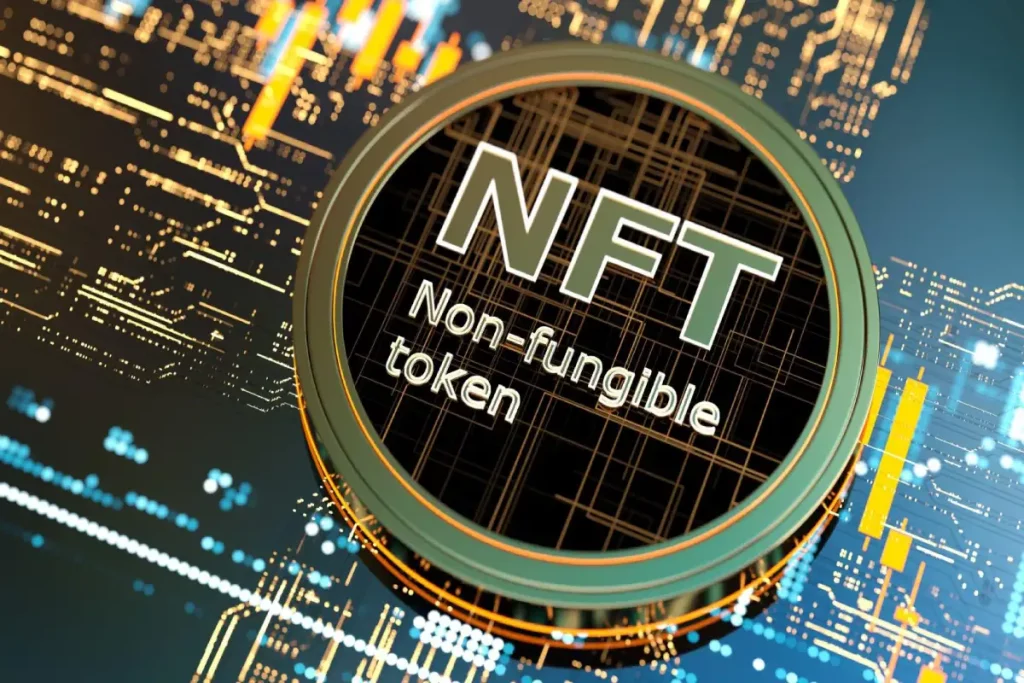Advanced NFTs have transcended their origins in digital art and collectibles, pioneering new frontiers in various industries. This article delves into their transformative impact on real estate, intellectual property, and the tokenization of physical assets. Discover how blockchain and NFTs are reshaping the way we own, trade, and protect assets. Apart from NFTs and Bitcoin, learn how the Ethereum Virtual Machine (EVM) is powering smart contracts and the future of the Ethereum ecosystem.
Table of Contents
Real Estate
In the realm of advanced NFTs, the real estate industry has emerged as a significant player in adopting this transformative technology. Gone are the days of traditional property transactions, as NFTs are paving the way for a more efficient and secure process.
The utilization of NFTs in real estate brings several notable advantages to the forefront. Firstly, it eliminates the need for cumbersome paperwork and intermediaries, streamlining the entire buying and selling process. With property titles represented as NFTs on a blockchain, the transfer of ownership becomes swift and tamper-proof.
Moreover, NFTs offer a level of transparency that was previously unattainable in the real estate sector. Property history, transaction records, and ownership details are securely recorded on the blockchain, ensuring that all parties involved have access to accurate and unalterable information. This transparency not only reduces the potential for disputes but also builds trust among buyers and sellers.
One of the most remarkable aspects of NFTs in real estate is fractional ownership. Through tokenization, a property can be divided into smaller, tradable units, allowing multiple investors to share ownership. This democratizes real estate investment, making it accessible to a broader range of individuals.
Intellectual Property and Licensing
NFTs, in this context, serve as a powerful tool for safeguarding intellectual property rights. Creators can mint their content, be it digital art, music, or written works, as NFTs on blockchain platforms. These tokens represent proof of ownership and authenticity, effectively curbing issues related to copyright infringement and intellectual property theft. The immutable nature of blockchain ensures that once an NFT is minted, its ownership history is indelibly recorded, thus offering creators unassailable evidence of ownership.
Licensing, too, is revolutionized by NFTs. Instead of relying on complex legal contracts and intermediaries, licensing agreements can be executed through smart contracts embedded in NFTs. This automation ensures that creators receive royalties automatically and instantaneously whenever their work is used or sold. Such transparent and efficient royalty distribution benefits both creators and licensees, fostering trust and fair compensation in the intellectual property ecosystem.
Prominent examples of IP NFTs have emerged across various creative domains. Musicians are releasing limited edition albums as NFTs, giving fans exclusive access and ownership rights. Visual artists are tokenizing their artworks, allowing collectors to own unique digital pieces. Even renowned authors are exploring NFTs to sell limited editions of their books, complete with bonus content and collectibles.
Tokenizing Physical Assets
The concept of tokenizing physical assets is at the forefront of innovation in the world of blockchain and NFTs. This innovative approach transforms tangible, real-world assets, such as real estate, art, and even commodities, into digital tokens that can be easily bought, sold, and traded on blockchain platforms. Tokenization opens up a realm of possibilities for asset ownership and investment that were previously difficult to access.
One of the key benefits of tokenizing physical assets is the increased liquidity it offers. Traditional ownership of physical assets often involves complex legal processes and illiquid markets, making it challenging for investors to buy or sell these assets quickly. However, by converting these assets into NFTs or other blockchain-based tokens, liquidity is significantly enhanced. Investors can trade these tokens on various cryptocurrency exchanges 24/7, providing them with greater flexibility and access to a global market.
Furthermore, tokenization brings a new level of divisibility to physical assets. Instead of buying an entire property or artwork, investors can purchase fractional ownership by acquiring tokens representing a portion of the asset. This fractional ownership model democratizes investing, allowing a broader range of individuals to participate in asset ownership and potentially benefit from asset appreciation.
Security and transparency are other key advantages of tokenizing physical assets. Blockchain technology ensures that ownership records are immutable and tamper-proof, reducing the risk of fraud and disputes. Additionally, every transaction involving these tokens is recorded on the blockchain, creating a transparent and auditable history of ownership changes and transactions.
Conclusion
In a rapidly evolving digital landscape, advanced NFTs have emerged as a powerful force, offering unprecedented opportunities in diverse sectors. As blockchain technology continues to advance, these applications will redefine ownership, investment, and creativity, propelling us into an exciting and transformative future.

